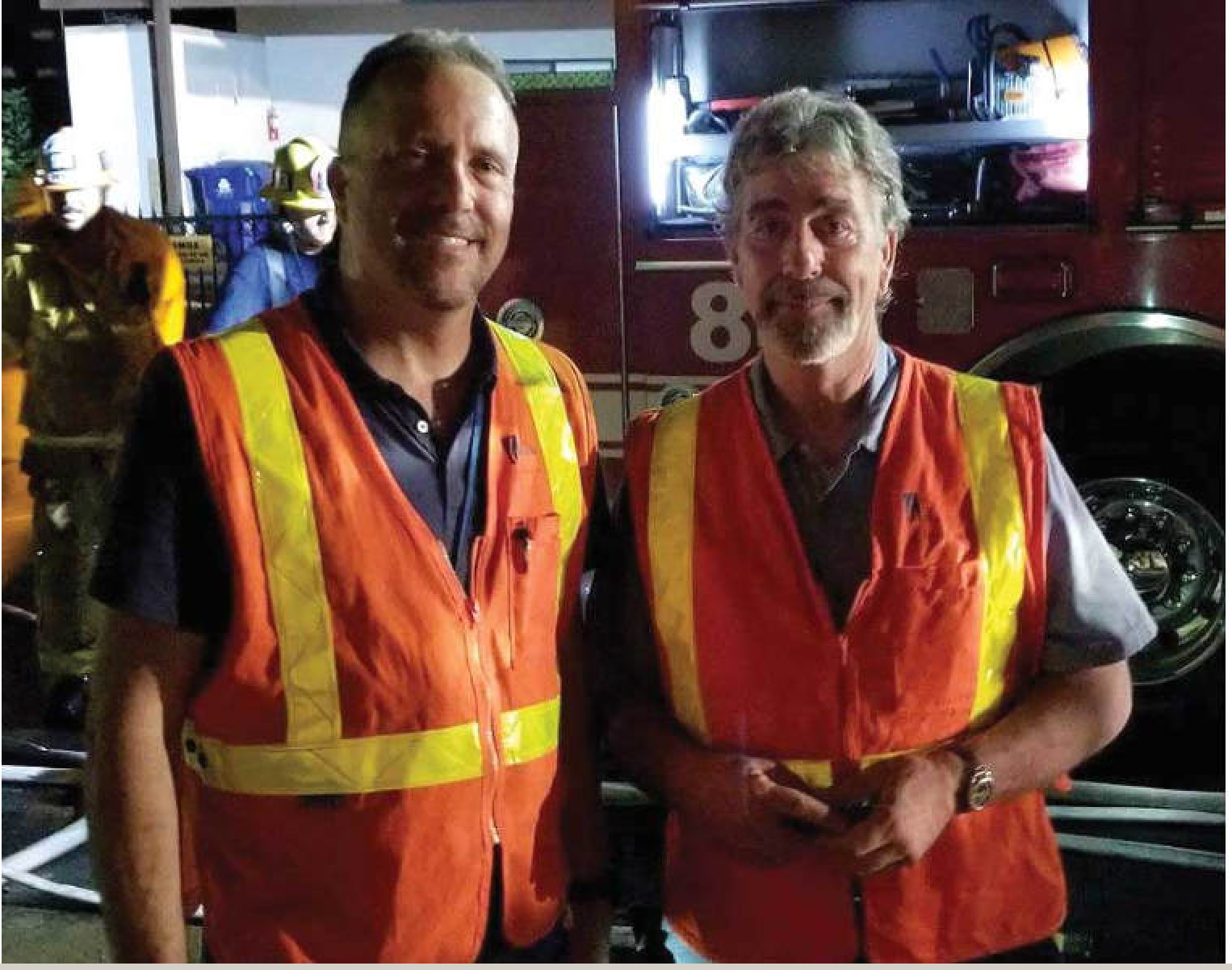October 2017, Vol. 244, No. 10
Features
SoCalGas Tech Cites Training for Life-Saving Response

When Southern California Gas Co. technician Jeff Catton pulled his truck into the cul de sac near a two-story residence, he was already thinking about what might lie ahead.
A seven-year employee at SoCalGas, Catton was responding to what many might consider a routine call – an elderly couple in the Los Angeles suburb of Woodland Hills reported smelling gas at their home and wanted it checked out.
“When I arrived, the homeowners were already standing in their driveway [as advised by a customer service representative when they called]. They were motioning for me to pull in, but that’s not our process,” Catton told P&GJ. As he waved for them to walk away from their home and join him at his truck, “Right then, that’s when the explosion occurred.”
The June 20 blast and resulting fire, which according to Los Angeles fire officials took 59 firefighters nearly two hours to contain, sent pieces of furniture and the building’s structure flying into the street and beyond. Fortunately, thanks largely to Catton’s swift thinking and adherence to company safety procedures, no one, including the homeowners, was injured.
“Once I saw no one was hurt, I roped off the street,” he recalled, after having his dispatcher call the fire department. “The whole neighborhood started coming out when they heard the explosion and felt the ground shaking. It was a hectic scene.”
Of course, where potential natural gas leaks are concerned, there are no routine calls, a fact Catton, 60, learned early on in his SoCalGas safety training.
“We go through extensive training for two months,” he said. “We [continue] going over safety policy once a week religiously.”
Catton explained that in addition to reviewing any incidents that might have occurred, SoCalGas technicians spend at least one hour a week on policy updates and review.
“It’s constantly on our minds,” said Catton, who previously worked as a trouble-shooter and repair technician in commercial air-conditioning. “Safety is a condition of employment. Coming here, I was really surprised how seriously they talk about safety. They keep you on your toes.”
Fire inspectors have indicated the Woodland Hills incident was caused by a third-party contractor who struck a natural gas service line while performing sewer work for the couple. The incident serves as yet another reminder of the importance of calling 811 before digging. SoCalGas, alone, experienced over 3,000 cases of accidental damage from digging to its natural gas lines last year.
“About 60% of pipeline damage due to digging is caused by homeowners or contractors who do not call 811 before they dig,” said Jimmie Cho, SoCalGas senior vice president of gas operations and system integrity. “They have no idea where buried pipelines may be, and that’s not safe. By contrast, when people do call 811, there is a 99.9% chance no damage will occur to a buried pipeline or other utility, which means most of these accidental dig-ins are preventable.”
As a reminder of that fact, a 30-foot-tall shovel went on display in front of the Woodlands Hills fire station on Aug. 11 as part of a campaign to urge residents to call before digging. Its size hopefully will stress just how potentially dangerous “routine” digging can be – even in a resident’s own backyard.
In honor of Catton’s dedication, he and dispatcher Hector Rocha, who handled the homeowners’ call, were honored at a State of the County meeting hosted by the United Chambers of Commerce of the San Fernando Valley.
While the honor and other attention is appreciated, Catton, who considers himself “sort of camera shy,” said what he did was simply part of his job – something any of his co-workers would have handled in the same manner due to their rigorous training.
“We are always putting it through our heads what we are going to face, what we are going to look for like stray electricity or any type of ignition, that could cause something to explode,” he said. “Mostly, we are thinking about the safety of the occupants.”
811 – What to Do
After making the call to 811:
- Mark the area where you’ll dig with white paint or flags.
- Wait your state’s required time before digging to allow time for utility owners to locate their buried lines. State laws vary from 48-72 hours, and most exclude weekends and legal holidays.
- Respect the marks – colored flags, paint or stakes – that indicate a buried line (red for electric and yellow for gas).
- Dig with care – Avoid digging near the marks; review your state’s required “dig-by-hand” distance requirement if you must dig close to the marks.
- Before you dig again, be aware that the professional location markings are good only for a specific amount of time.
“Spotlight on Utilities” highlights innovations and achievements of those in the business of providing natural gas to homes and businesses. If you have a suggestion for inclusion in the column, email mreed@oildom.com.





Comments